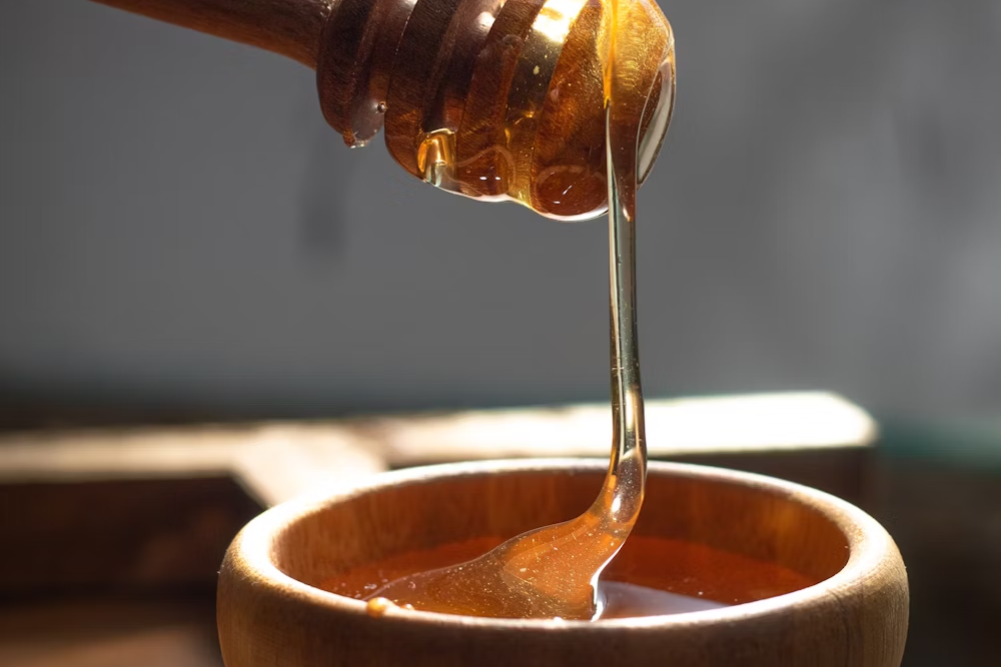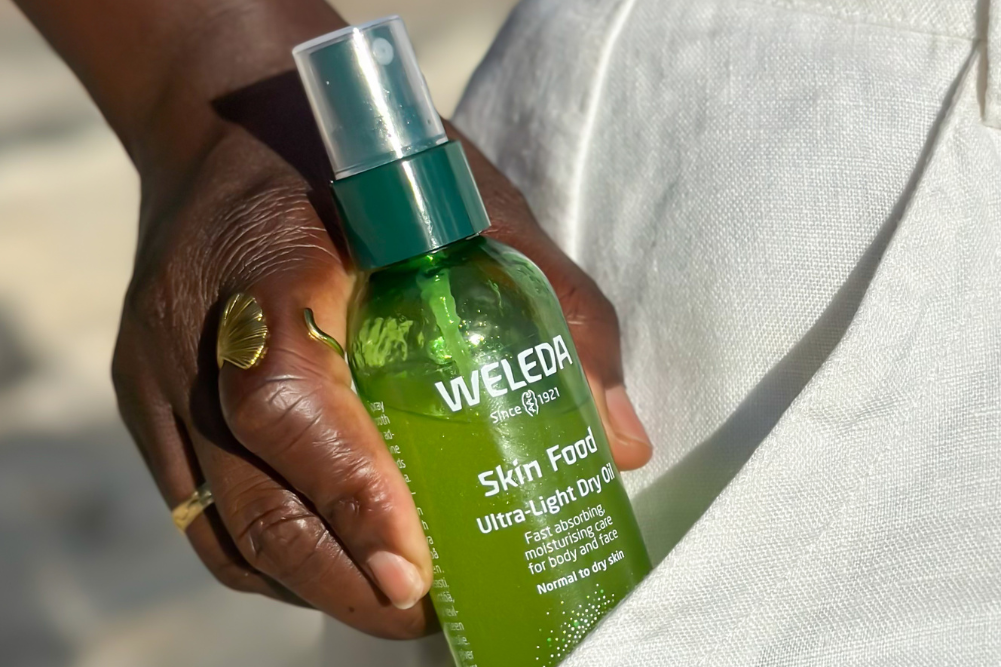Why sugar is the enemy of your skin
One of the skin’s biggest enemies is the chameleon that most of us struggle with cutting out of our diets: sugar, in its many guises. Sustained high blood sugar levels causes glycation, a technical term for when sugar sticks to the protein collagen and damages it. Inflammation of the skin and increased free radical activity are also triggered by sugar consumption, and both adversely affect collagen. Collagen is what keeps our skin strong and bouncy. When it is damaged or deteriorates, we see wrinkles, a decline in skin elasticity and a dull, lacklustre complexion.
There is no face cream that equals the great skin benefits and skin health investment of taming your sweet tooth. While sugar tantalises your taste buds, it sabotages your complexion (and your waistline). It also feeds the bad bugs in your gut, which, if they predominate over the beneficial flora in the digestive system, can have a profound effect on health and skin. After all, it’s in the gut that you metabolise hormones, make detoxifying enzymes, make nutrients, neutralise pathogens and have most of your immune system. Poor gut health and leaky gut are implicated in all skin problems, from eczema to rosacea to premature skin ageing. Acne, also known as “diabetes of the skin”, can be significantly helped by reducing sugar consumption.
Sugar is super-addictive and it may be difficult to withdraw from, however we are highly adaptable beings. Once you acclimatise to eating fewer sweet foods and slowly wean yourself off, you will notice a huge difference in your skin health and overall health and wellbeing.
Not all sugars are made equal in the damage they cause. Any refined and added sugar to meals or food products is problematic, especially fructose in the form of high-fructose corn syrup. Fructose is metabolised differently in the body from glucose as it’s a 100 per cent burden on the liver, whereas your body only has to break down 20 per cent of glucose as the rest is used by the body and brain as energy.
The metabolism of fructose creates wastes and toxins that affect your skin and waistline, and it causes both inflammation and oxidative damage. Sucrose, or table sugar, is 50 per cent fructose and 50 per cent glucose. It’s better than pure, isolated fructose such as high-fructose corn syrup, but it’s still very problematic and best avoided.
The least damaging sugars are those found in unrefined wholefoods. Nature provides the perfect balance of nutrients in foods, which helps buffer negative effects of one single component such as sugar. Even though fructose is found in whole fruit, it’s within the matrix of a wholefood and in the context of other skin-loving nutrients, such as fibre, that can help us metabolise the sugar and feel full.
Fruit has many health benefits but is best eaten in moderation. Always eat the whole fruit and avoid drinking the juice, which is a concentrated source of fructose without the fibre to help balance blood-sugar levels. If you are healthy and your gut is happy, fruit in moderation is not a problem. If you have candida and your digestive health is poor, then avoiding all sugars — even those in fruit — is recommended. Dried fruit is best eaten in even more moderation as it is higher in fructose, but if you choose to eat it then combine it with nuts, as protein helps to regulate spikes in blood-sugar levels.
Sugar also appears in the form of carbohydrates. When it comes to high-GI (glycaemic index) and low-GI carbs, unrefined high-GI foods such as carrots and bananas are still healthy foods, offering myriad health benefits; just don’t eat loads at once and, if you do, eat them with protein. While these foods may have a high GI, they have a low glycaemic load, unlike refined high-GI foods. Not all low-GI foods are good, either. Agave syrup, for example, is low GI but is highly refined and high in fructose.
My overall philosophy when it comes to sugar, carbs and skin health is to go low HI: low human intervention. Opt for whole fruits and unrefined grains and carbs. If you want to add a sweetener, use those that are unrefined. Organic maple syrup is high in minerals so offers some skin benefits. Raw honey offers myriad health benefits. But again, these are added sugars and are best used in moderation.
Brown rice syrup (research your brands and opt for organic: recent studies show some brands are high in arsenic) may be a good option as it is low-GI and low in fructose. However, it is heavily refined. The herb stevia in moderation can also work well; it is sweet but contains no sugar.
Here are some tips on how to help avoid eating sugar as well as curb sugar cravings, for healthy skin and body.
- Eat sour foods. Sour foods can help balance sugar cravings.
- Mineral deficiencies can make you crave sugar. Eat mineral-rich foods and choose Himalayan sea salt over commercial table salt.
- Eat small amounts of food regularly to help avoid intense sugar cravings.
- Supplements such as chromium and alpha-lipoic acid can help curb sugar cravings. Natural sources of chromium include lean meats, pork kidney, asparagus, cheese, molasses, brewer’s yeast and whole grains.
- Include protein at each meal to help balance blood-sugar levels.
- Eat carbohydrates that are low GI — aside from whole fruits, which are OK in moderation.
- The GI of a carbohydrate-rich food is reduced when it’s eaten with fibre, oil and protein. Eat some good-quality nuts with each wholefoods meal and snack.
- Different preparation and cooking methods influence the GI. As a general rule, the less we need to chew a food, the quicker the glucose is released into the blood.
- Adding lemon juice or vinegar to a meal reduces the overall GI and blood-sugar spike for that meal.
- Cinnamon has also been demonstrated to reduce blood-sugar levels. However, use in moderation.
- Eat the fat and protein portion of a meal first. It has been demonstrated that a person’s blood-sugar level will be lower after the meal is finished.
- Avoid eating foods that contain simple sugars:
- Anything with white, brown or raw sugar added
- Chocolate, lollies, ice-cream
- Commercial cakes, biscuits, slices etc usually contain sugar (unless homemade)
- Honey, jam, maple syrup, Nutella, lemon spread, most commercial spreads
- Prepared sauces and gravies (read labels)
- Soft drinks, fruit juices, cordial, alcohol
- Most commercial breakfast cereals
- Flavoured yoghurt, sweetened “plain” yoghurt, custard, jelly, most desserts
- Names for sugar that you might find on labels include: sucrose, glucose, fructose, maltose, fruit concentrate, dextrose, polydextrose, honey, barley malt, malted barley, brown rice syrup, fruit juice concentrate, corn syrup and corn sweetener.
- Artificial sweeteners also need to be avoided as they contain chemicals that are neurotoxic and also make the brain crave more sugar.
Carla Oats is a natural Beauty expert and the author of Feeding Your Skin.







